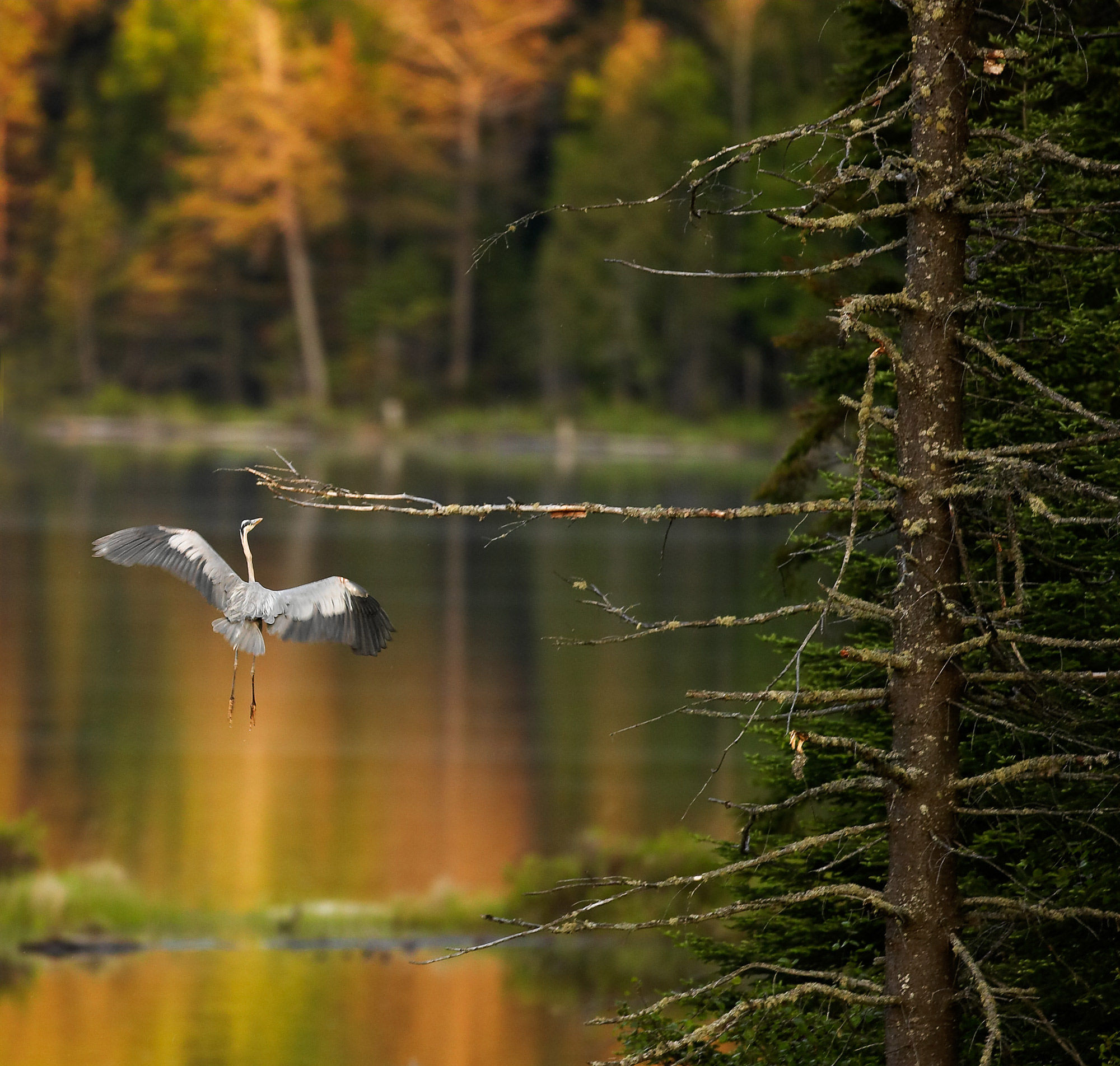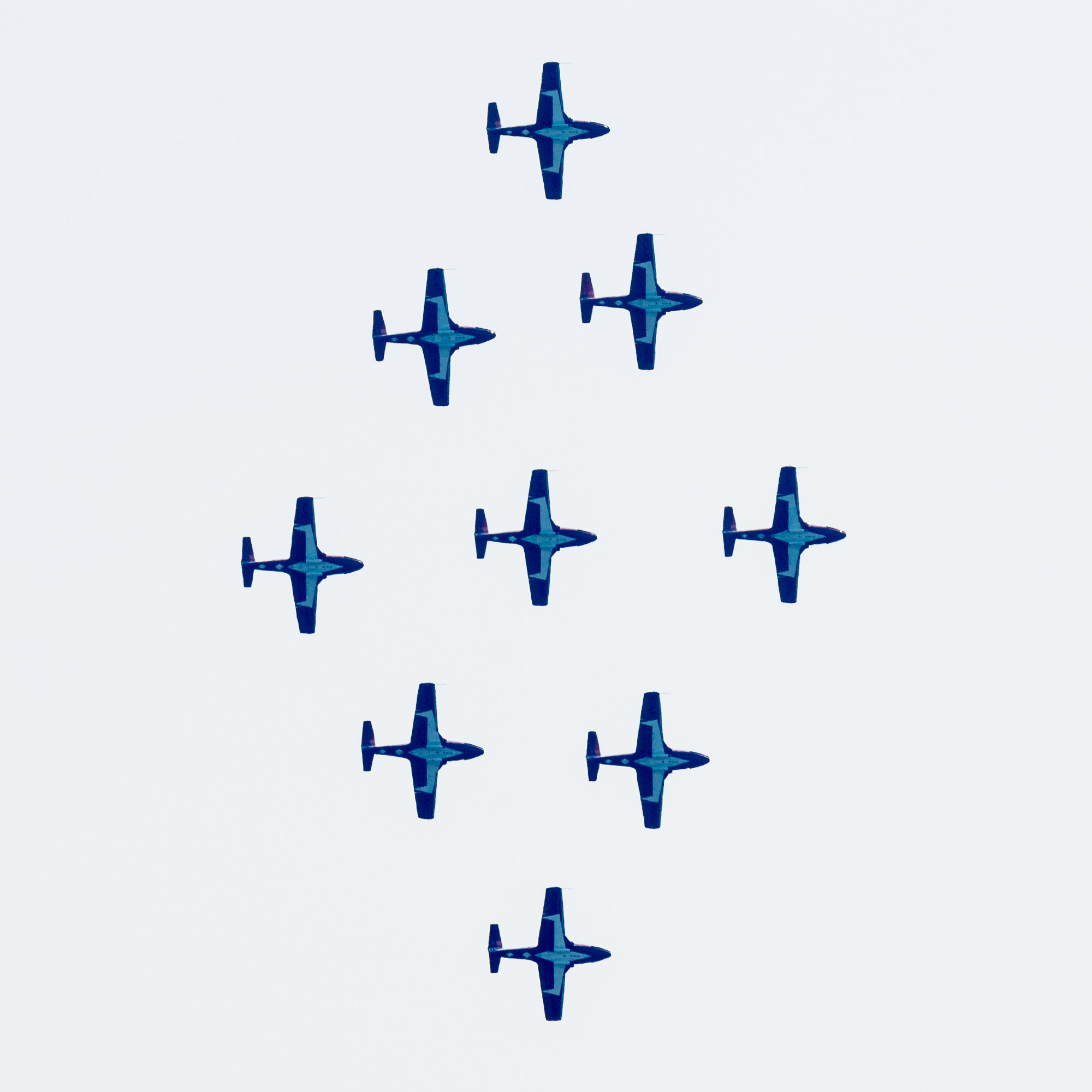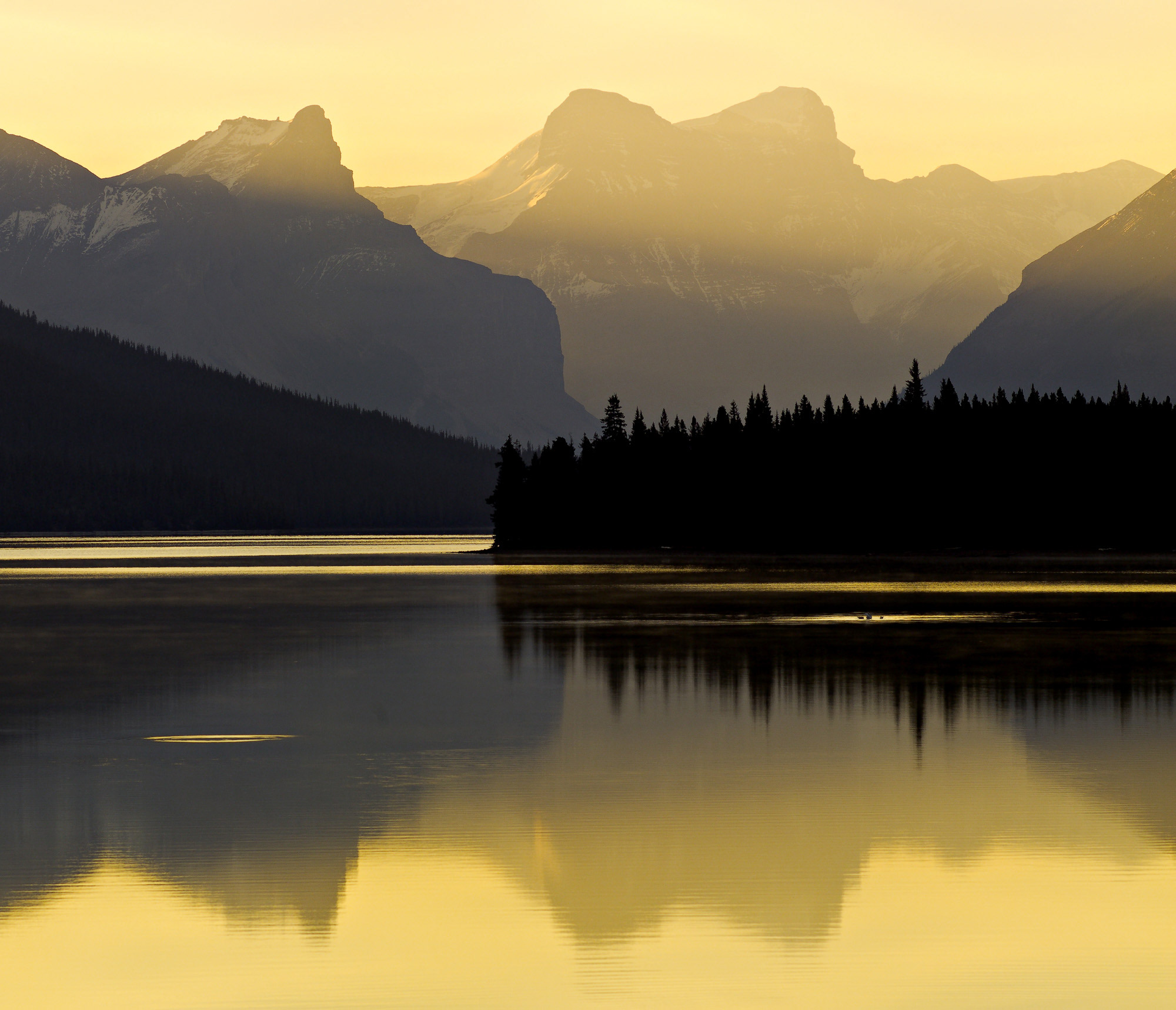

Do stars move in circles around Polaris in your camera? As the lawyers say, it depends. If you have the usual rectilinear lens (anything other than a fisheye lens); and your camera is not pointed directly at Polaris, the answer is no. With a slight tilt away from Polaris, the star trails become ellipses and more extreme tilts produce parabolic or hyperbolic paths. Of course, all the star trails are beautiful, so why does one care about mathematical descriptions of their shapes? The answer is that photographers need to calculate maximum exposure times that will still avoid noticeable star trails resulting from motion. The rate of growth of trails for stars with various declinations and positions on the sensor is the subject of this study. It has been prompted by the approximate equations1 and inaccurate calculators2 that have been posted online. Here I will display exact calculations of star trails that can serve as benchmarks for approximations and rules of thumb for photographers.
A perfect, distortion-free, rectilinear lens would project an image identical to that found in a pinhole camera. So, for this discussion, I will assume a pinhole that a light ray from any star passes through the before striking the sensor. The collection of stars that make an angle of θ (the declination 𝛿=𝜋/2− 𝜃) with the north pole of the celestial sphere (close to Polaris) produces a right circular cone of light rays that passes through the pinhole to produce a cone of light inside the camera.3 This cone defines a circle of points on the sensor with Polaris very near its center. As described above, we expect a perfect circle if the optical axis of the camera is aimed at the North Pole of the Celestial Sphere. With a tilt of the optical axis away from the North Pole, the image of Polaris will move away from the center and even off the sensor. The slanted cone of light of stars with declination will still be intersected by the plane of the camera sensor but will no longer inscribe a circle. (Note that the declination of the North Pole is 90o while that of Polaris is 89o10’. The true North Pole has been used in all calculations, but I will not distinguish between Polaris and the North Pole in discussions.)
A right circular cone is illustrated in Figure 1. A cutting plane perpendicular to the axis of the cone intersects the cone to define a circle. A line from the circle to the apex of the cone and beyond is called a generatrix. The angle between the generatrix and the axis of the cone is denoted by θ, and the angle of the cone is defined as 2θ. For a plane that is tilted and is no longer perpendicular to the axis of the cone, the intersection defines an ellipse if the intersection is a closed curve. However, when the tilted surface becomes parallel to the surface of the cone, the intersection defines a parabola. At still higher tilt angles, one obtains hyperbolic curves. The second part of the hyperbola is obtained from the intersection of the plane with the nappe or other side of the double cone that is defined by the extended generatrix.
The curves defined by the intersection of a right circular cone with cutting planes as shown in Fig. 1 are called conic sections.4 This term was defined by the Greek mathematician, Menaechmus (380-320 BCE), and the theory of conic sections has fascinated mathematicians ever since. It is of interest that the conic sections are described by equations of second order. The equation for the ellipse is particularly simple and can be constructed if the interaction point of the cone axis with the cutting plane and the major axis of the ellipse are known. Also, an equation in polar coordinates is available that describes all conic sections in terms of parameters that I have not introduced here.4 However, its relationship to the parameters of the line of intersection between the cone and the cutting plane is complicated.


For present purposes, I have sought a method to calculate star trails directly without the use of analytical equations. Elementary vector math provides a simple solution. (Those who don’t enjoy math can skip the next two paragraphs.) Figure 2 shows the arrangement for a full frame sensor (24mm x 36mm) with a rectilinear lens of focal length f = 14mm. The position of the center of the lens or pinhole is denoted by the x, y, z coordinates (0, 0, 14). The center of the sensor is at (0, 0, 0), and in this special case, the image of Polaris is located on the sensor with coordinates (-9, 0, 0). The light ray from Polaris (vector P) is tilted at the angle α from the optical axis of the lens; and the set of vectors, including A and B, making an angle θ with P intersect the dotted ellipse to define a curve of constant declination. The vectors C and D define a curve of much lower declination. Recall that 𝛿=𝜋/2 − 𝜃, and θ is shown in Fig. 2.


Vector math is so useful here because a vector Dot product such as 𝑨∙𝑩 reveals the angle between the two vectors.5 In particular, the vector A defines a particular point on the sensor and the Dot product 𝑨∙𝑷 permits an angle θ and declination δ to be assigned to that point. By this method, a declination can be assigned to each point on the sensor, and by connecting the points associated with a given declination a conic section can be described on the sensor. In the next step the difference vector A – B provides the distance on the sensor between the points on the sensor with the same declination defined by the vectors. All that remains to be determined is the time required for a star to move that distance. From the Dot product 𝑨∙𝑩 we have the angle γ between these vectors, which can be related to the angle ∅ on the 360o, 24hr clock through the equation ∅ = γ ⁄ (sin (θ)). Therefore, the time required to move the distance A – B is just Δ𝑇 = (∅/2𝜋) 24hr. (the equation for ∅ is discussed in the appendix.)
The first example (Fig. 3) shows the image of Polaris at the center (0, 0, 0) of the sensor. In this case vector math, of course, works. However, it is not needed because simple trigonometry suffices to determine the circles of constant declination and the times of transit. Here, as in my previous publications, I have chosen the circle-of-confusion (CoC), equal to the sensor diagonal divided by 1500, as the maximum distance permitted during an exposure. For prints up to about 13in x 19in viewed from 13in, this ensures that star trails will be insignificant. The divisor can, of course, be increased in more demanding situations. This distance can be converted to numbers of pixels if desired, but that will be a different number for each pixel density on the sensor. For high-resolution full frame (35mm) sensors (FF) the CoC diameter will span four to six pixels. The red numbers in the figure indicate the times required for a star to move through a distance equal to the CoC.


Figure 4 shows star trails when the image of Polaris is located at (-9, 0, 0) as shown by the yellow star. The straight-line segments in the curves result from the limited number of points used to construct the figure. The dependence of exposure times on declinations is strong; however, the dependence on location on the sensor is significant even for points on a curve of constant declination. The shortest exposure time of 17s found here is one of the shortest we have encountered in any situation.
In Fig. 5 the image of Polaris is at the extreme left side of the sensor. The stars directly overhead have declinations of close to 40o. I note that the stars with the declination 0o fall on a straight line and that exposure times depend strongly on the position on that line. Figure 6 shows stars with a declination of 0o directly overhead which means that Polaris will appear in the sky 90o away from that direction.






Therefore, the image of Polaris will not appear on the plane containing the sensor no matter how wide it is. For the numerical calculation, we can reach the angle of 89.999o by placing the image of Polaris at (-106, 0, 0). At first glance the results are striking. Along the horizontal center-line, the maximum exposures are constant. The changing distance from the lens (pinhole) just cancels out the effect of changing declination, while at fixed declination the effect of location is seen to be strong. There is, of course, horizontal symmetry around the vertical center line because stars on the right-hand side are circling the Celestial South Pole.
It should be emphasized that the results shown here only apply to rectilinear lenses, and the specific numerical values are limited to an FF sensor with a 14mm lens. The situation is very different for fisheye lenses where in most cases the angular change for an incident ray is proportional to a distance on the sensor. Fisheye lenses can display a full 180o field of view and sometimes a bit more. Star trail calculations are much simpler for fisheye lenses.6
A search of wide-angle night sky photographs on photo related websites shows that most are obtained with FF sensors and that 14mm lenses are favorites. 20mm and 24mm lenses are also popular for FF cameras. A few images are obtained with APS-C cameras with 10mm, 12mm, and 18mm lenses. Photos from fisheye lenses are clearly in a minority; however, 15mm fisheyes and 8mm fisheyes can yield nice results on FF and APS-C cameras, respectively.
As an example, I show in Fig. 7 a 3648px by 5472px photograph of the night sky made with a Samyang 14mm lens on an FF camera. The exposure was 30s at f/2.8, and the camera was aimed at the Celestial Equator δ = 00. The approximate locations of the Celestial Equator and the curve for Right Ascension (RA) = 20h are shown in red. A second exposure of 130s was taken to reveal the foreground and to show the star trails. I show 1000px by 1500px crops taken at the upper left corner (Fig. 8a) and the center (Fig. 8b) to reveal the lengths of the star trails. In the corner, the average star trail has a length of 70px while the trails in the center average about 28px. The sensor had 20.2 Mpx and the diagonal was 43.3mm or 6577px. The CoC turns out to be 29 or 4.4px. Therefore, trails at the corner correspond to about 16 CoC and the trails at the center are about 6 CoC. These numbers are consistent with the calculations shown in Fig. 6.




The take-home message is that equations and calculators that make use only of declinations and focal lengths cannot be accurate for all stars. One can make up simple rules of thumb from the results shown here. For example, 250 divided by the focal length will be safe for all stars and about 75% of the stars will be taken care of by 350 in the numerator. (For APS-C cameras divide the numerators by 1.5). However, one sees many photographs online that have been taken with a 14mm lens and a 30-second exposure. Some stars at the edges may be oblong and there may be short star trails at the edges, but the stars in the center of the frame will be great. They are good enough for me. It all depends on how critical the photographer is and how large the prints are that will be viewed.
The last question is how can these calculations be transferred other situations, e.g. a 24mm lens? In general, one must start from scratch for each focal length. This can be done quickly with a math program such as Mathcad®, which determines angles from vector products, determines vector differences, and evaluates functions. Even better, a simple computer program could be written to generate the grid of star declinations, detect the points with similar declinations, and to compute the transit times. Also, in some situations, the results can be scaled to apply to a new situation. For example, if a 14mm lens is used with a four-thirds camera, the cropped center section covering 18mm x 12mm rather than 36mm x 24mm can be taken from figures 3 through 6; but the CoC would have to be adjusted to cut the exposure times in half. Also, the entire setup could be scaled up by a factor of two to give a 28mm lens and a sensor with a 72mm width. Again, the calculation would not change except that CoC would have to be doubled thus doubling the exposure times for the same image quality. Of course, others may prefer to use analytical equations to set up a more general method of calculation.
Appendix
In vector math, the lengths or absolute magnitudes of the vectors A and B are given by |A| and |B|, respectively. The vector Dot product is defined as A ∙ B = | A | | B | cosθ. Therefore, θ, the angle between A and B is given by θ = atan (A ∙ B) / |A||B|. If A and B originate from the same vertex, the distance between their tips is given by |A – B|.
In a right circular cone, the base is perpendicular to the axis of the cone. When two closely spaced generatrix vectors reach the base, they define a small arc, δS, on the circumference of the base. This arc covers a small angle ∅ out of the full 2π radian of the base. However, the angle between the generatrix vectors, γ, is less than ∅ if the angle θ is less than π/2. One way to determine the relationship between these angles is to note that δS = r∅ = Lγ where r is the radius of the base, “h” is the height of the cone, and the slant height of the cone is 𝐿= √(ℎ2+𝑟2). Therefore, ∅ = γL ⁄ r = γ / sin (∅). Another way to relate angles on the base to vertex angles is to note that the surface area of the cone, not counting the base area, is given by πLr. If the rolled out flat lateral surface were to fill the complete 2π radians, it would have the πL2 area. The ratio of these two areas gives the ratio of the angles.
The eccentricity has not yet been defined. The eccentricity is given by e = cos (π/2 – α)⁄cos(θ) where the angles are defined in Fig. 2. For a circle e = 0, for ellipses e < 1, for a parabola e = 1, and for hyperbolas e > 1. In Fig. 4 e = 1 at about δ =33o; and in Fig. 4 we find e = 1 at about 53o.
- https://photophys.com/photophys/entry/star-trail-calculations-rectilinear-or
- https://www.lonelyspeck.com/advanced-astrophotography-shutter-time-calculator/
- https://en.wikipedia.org/wiki/Declination
- https://en.wikipedia.org/wiki/Conic_section “Conic section” From Wikipedia, the free encyclopedia.
- https://en.wikipedia.org/wiki/Dot_product
- Johnson, C. S., Jr. (2017). Science for the Curious Photographer, 2nd New York, NY, Routledge Press, Chap. 10
Charles S. Johnson, Jr.
April 2018
Read this story and all the best stories on The Luminous Landscape
The author has made this story available to Luminous Landscape members only. Upgrade to get instant access to this story and other benefits available only to members.
Why choose us?
Luminous-Landscape is a membership site. Our website contains over 5300 articles on almost every topic, camera, lens and printer you can imagine. Our membership model is simple, just $2 a month ($24.00 USD a year). This $24 gains you access to a wealth of information including all our past and future video tutorials on such topics as Lightroom, Capture One, Printing, file management and dozens of interviews and travel videos.
- New Articles every few days
- All original content found nowhere else on the web
- No Pop Up Google Sense ads – Our advertisers are photo related
- Download/stream video to any device
- NEW videos monthly
- Top well-known photographer contributors
- Posts from industry leaders
- Speciality Photography Workshops
- Mobile device scalable
- Exclusive video interviews
- Special vendor offers for members
- Hands On Product reviews
- FREE – User Forum. One of the most read user forums on the internet
- Access to our community Buy and Sell pages; for members only.














